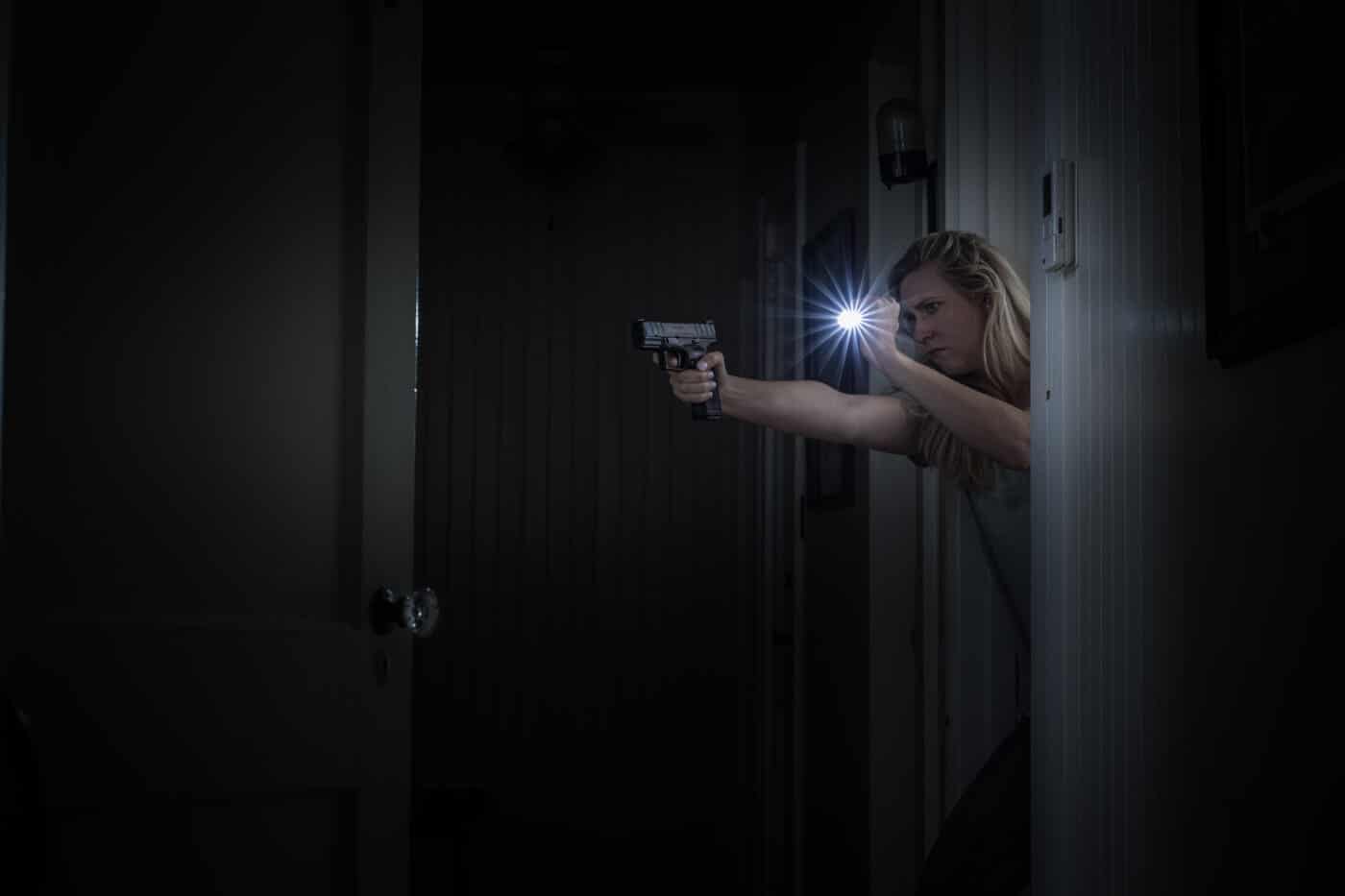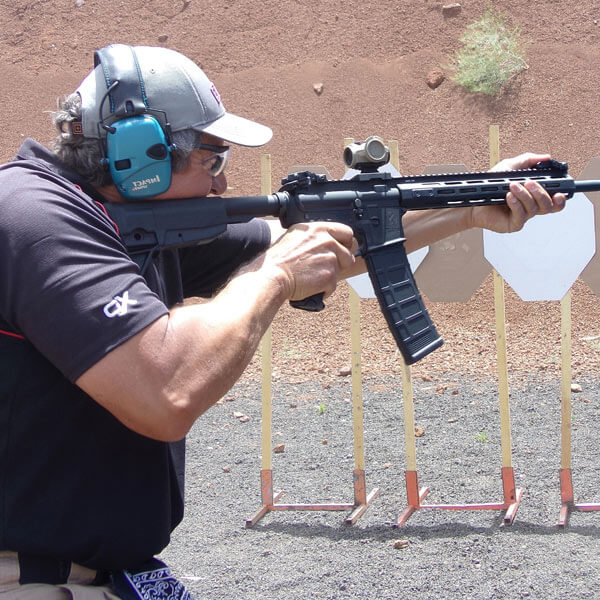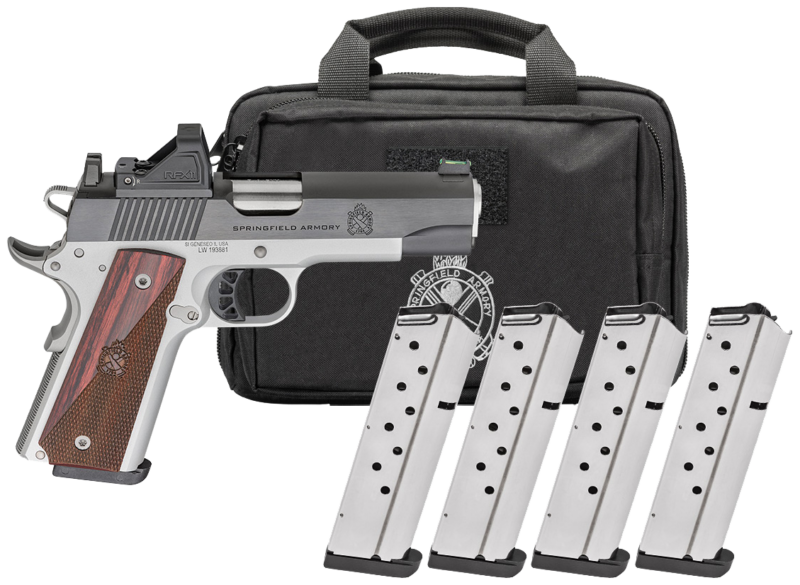Handheld or Weapon-Mounted Light: What You Need To Know
April 15th, 2022
5 minute read
I am not a person who is highly enlightened in the areas of IT and computer technology. However, I am absolutely engaged when it comes to mechanical and scientific technology — especially when it comes to firearms, related equipment and ballistic technology. The huge jumps in bullet technology, firearms creation and associated tools is an area with which I am completely fascinated.

In the last couple of weeks , I was able to spend time with my area’s Streamlight rep, where we discussed products and light technology. It’s been said that you can learn more by listening than by talking. Well, I learned a lot. We talked and discussed topics over a few hours, and I learned and contemplated more in the area of the science of light design that I have for quite some time.
Streamlight TLR-7A
During this meeting, I was able to learn about Streamlight’s weapon mounted light (WML) TLR 7-A and get one to try out for myself.

Mounting this light to my carry pistol, I found it to be very compact, light and easy to carry. The ambidextrous rear activation switches were intuitive and easy to control. This light is 500 lumen strong with a very good throw.
With the ever-increasing interest of compacting the WML, this light fills many roles, including mounting to a daily-use firearm to concealed carry.
A Bump in the Night
There are numerous schools, articles and instructors who cover the tactics of the use of a WML. I will attempt to simplify this complex area of use and instruction.

If you hear that bump or crash in the middle of night, should you grab your trusty defense tool mounted with your favorite WML to search and clear your “castle”? As a general rule, unless there is some exigency, I would suggest you hold your current room, find the best cover position with the best view of doors and windows, call the police, and wait for additional “back-up”.
A simple example of an exigent circumstance might look something like this: You have younger children in other areas or rooms of the home and you sense a problem outside your immediate area. You decide to clear the area to their location(s).
Once you have your loved ones corralled, I would then return to the concept of holding that area and waiting for additional “support”. Food for thought; in most cases to my knowledge even the police with radio communication, ballistic protection, and repetitive experience will not clear a structure without at least two officers!
Basic Techniques, Simplified
In the evening with lights turned off, walk through your home and note areas of your home that appear darker. It probably seems that these areas are black holes where ambient light gets sucked into the blackness. Bad guys could hide in these areas. The use of a powerful handheld or weapon-mounted light cuts into this darkness, helping us see what might be hiding from the light. [Ed. note: Make sure you read “Why You Also Need a Handheld Light”.]

I used this technique in several areas of my home. Even from a rear bedroom, across two other open-spaced rooms, the TLR-7A was easily able to illuminate the dark hole of the front room of my home.
The use of a light can also be used to hold and dominate an area with light. Keeping your household intruder out of that area of light and away from your defended position.
Backlighting
If possible, use exterior and — as deemed necessary — interior lighting to backlight any intruder. This way in your darkened, bunkered position, you can watch for and read shadows. If your position or situation is compromised and you are actually backlit, use light to turn around this situation by putting a much higher level of illumination in front of you.

Finding the Bad Guy
If an intruder is located, try to overwhelm that person’s position with light and give very specific directions (for example; “Don’t move,” “I’ve called the Police”, “Don’t make any hostile movement,” or some other type of specific well thought our commands).
To Light or Not to Light
Some schools and instructors have taught the intermittent use of lighting. My thought? It depends. If the intermittent use of lighting gives the bad guy a chance to potentially move to a more advantageous position, that is a problem. As a result, I say keep your light focused on that person and dominate with light.

Maintenance
Check and test your equipment regularly. In the areas of lighting systems, the worst time to find that your light doesn’t work is when you absolutely need it. Change batteries regularly and make certain your lights are operational.
Conclusion
The above has been a very general overview of the use of the WML and even the handheld light. Seek out training as often as feasible, and perform consistent mental rehearsals to build proper training pathways. Think about the “what ifs”. Don’t get caught with your feet and mind cemented to the ground — always be seeking out a “better way” through training and mindset.
Editor’s Note: Please be sure to check out The Armory Life Forum, where you can comment about our daily articles, as well as just talk guns and gear. Click the “Go To Forum Thread” link below to jump in!
Join the Discussion
Featured in this article
Continue Reading
Did you enjoy this article?

 81
81








